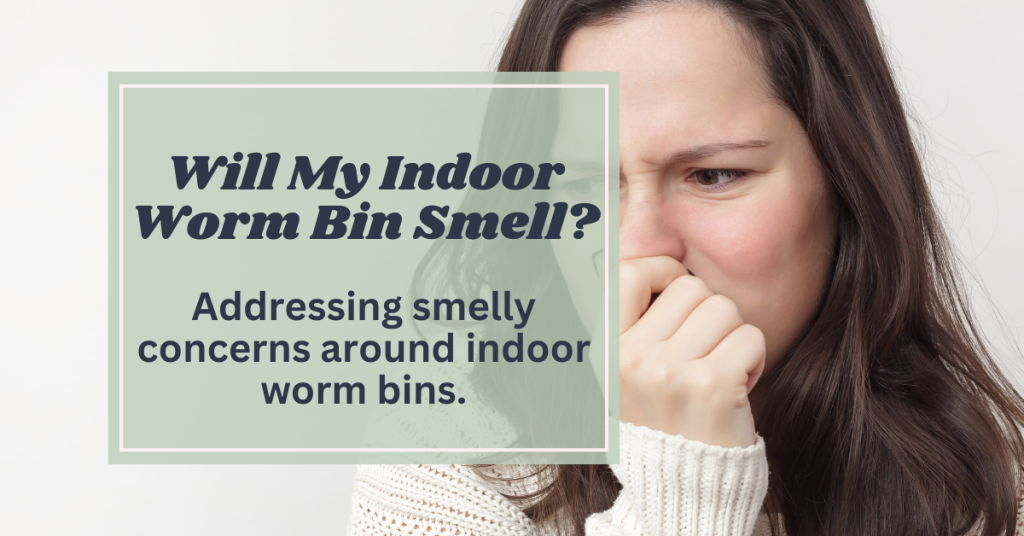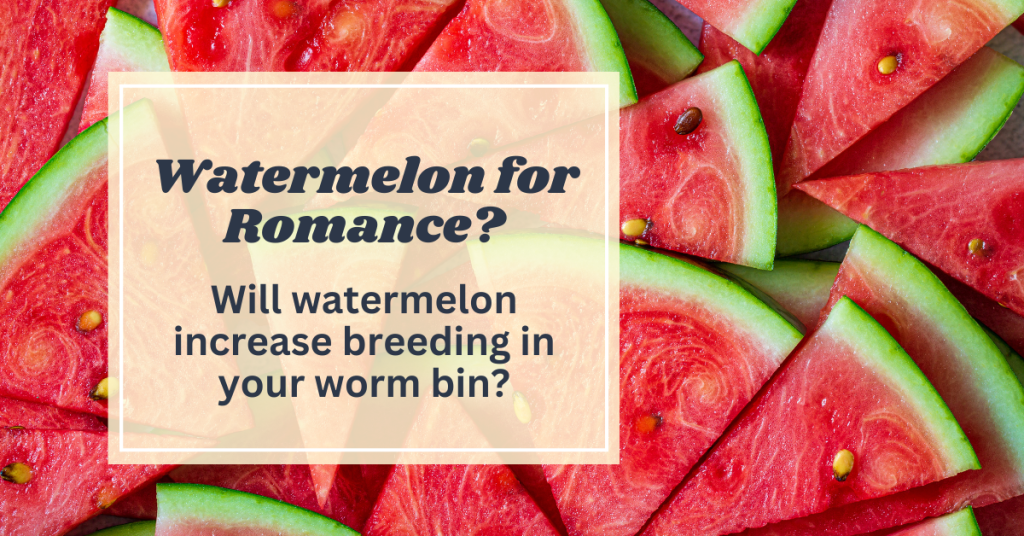What Can You Put In Your Worm Bin? The Do’s & Don’ts of Feeding for Beginners
Please note that this post may contain affiliate links, which means we may earn a commission if you make a purchase through our links, at no extra cost to you. Learn more.
Starting a worm bin for vermicomposting is a fantastic way to recycle kitchen scraps and produce nutrient-rich compost for your plants. However, knowing what can and cannot be composted in a worm bin is crucial to maintaining a healthy and effective system. Adding the right materials will keep your worms happy and your composting process smooth, while avoiding certain items will prevent common problems such as odors, pests, or imbalanced compost.
In this guide, we’ll cover the essential dos and don’ts for composting in a worm bin, providing you with a clear understanding of which materials are beneficial and which should be avoided. Whether you’re new to vermicomposting or just looking to refine your approach, this information will help ensure your indoor composting system thrives.
The Basics of Worm Composting
Before diving into what you can and cannot compost, it’s important to understand the basics of worm composting. This knowledge will help you make informed choices about what materials to add to your worm bin and how to keep your system healthy.
What Worms Need to Thrive
Worms are the key players in your vermicomposting system, and they need a balanced diet and environment to do their job effectively. Here’s what you should know about their needs:
- Food Balance: Worms thrive on a mix of “greens” (nitrogen-rich materials) and “browns” (carbon-rich materials). Greens include fruit and vegetable scraps, while browns include things like shredded paper and cardboard. This balance helps create a rich compost and supports healthy worm activity.
- Moisture Levels: Worms need a moist environment to stay healthy, but the bin should not be soggy. The ideal moisture level is similar to a wrung-out sponge—damp but not dripping.
- Temperature: Worms prefer temperatures between 55-77°F (13-25°C). Too hot or too cold can stress them out or even halt their composting activity.
- Airflow: Proper aeration is crucial. Worm bins should have some ventilation to prevent odors and provide oxygen to the worms and microbes.
Importance of Balancing Greens and Browns
A well-balanced worm bin contains a mix of nitrogen-rich greens and carbon-rich browns. This balance helps to:
- Speed Up Decomposition: Nitrogen helps to break down organic matter quickly, while carbon provides structure to the compost.
- Maintain a Healthy Worm Environment: Too much of one type can lead to problems such as excess moisture or imbalanced pH levels.
Maintaining this balance is key to a successful vermicomposting system. Now that you understand the basics, let’s explore the specific materials you can and cannot compost in your worm bin.
Dos: What You Can Compost
When setting up a worm bin for indoor vermicomposting, selecting the right materials can make all the difference in creating a thriving compost system. Here’s what you should consider including in your worm bin:
Fruit and Vegetable Scraps
Fruit and vegetable scraps are excellent for your worm bin. Items like apple cores, banana peels, and carrot tops provide essential nutrients that worms will break down into valuable compost. These scraps are not only rich in nutrients but are also easily digestible for the worms. To make the process more efficient, it’s helpful to chop or shred these scraps into smaller pieces. This increases the surface area, allowing worms to break them down more quickly and effectively. A diverse mix of fruits and vegetables will also ensure your worms get a balanced diet.
Coffee Grounds
Coffee grounds and tea bags are great additions to your compost. Coffee grounds are high in nitrogen, a crucial component that aids worms in decomposing organic material. They also help improve the texture of the compost by adding a fine consistency, which promotes better aeration. When adding coffee grounds and tea bags, it’s wise to do so in moderation. This prevents an imbalance in the compost and avoids potential acidity issues. If you’re using tea bags, make sure they are compostable and free from synthetic materials or staples.
Crushed Eggshells
Eggshells offer another benefit to your worm bin. They provide a natural source of calcium, which helps maintain the pH balance of the compost and strengthens the worms’ body structure. Crushed eggshells also contribute to better compost texture by preventing the material from becoming too compacted. It’s important to crush the eggshells before adding them to the bin to facilitate quicker decomposition.
“Carbon” Components (Browns)
Shredded paper and cardboard are valuable for maintaining a balanced compost environment. These materials are rich in carbon and help absorb excess moisture, which can otherwise lead to a soggy bin. They also add structure to the compost, helping to prevent it from becoming too dense. When using paper and cardboard, opt for plain, non-glossy types to avoid introducing harmful chemicals into the compost. Shredding or tearing these materials into smaller pieces will make them easier for the worms to process.
Incorporating these materials into your worm bin will create a rich, healthy environment for your worms and ensure an effective composting process. By providing a variety of appropriate materials, you’ll help your indoor vermicomposting system thrive.
Bringing the Outside In?

Leaves and grass clippings can sometimes pose challenges for indoor worm bins. While they provide valuable carbon and nutrients, they can also introduce pests and critters into your indoor composting system. Leaves, especially if not thoroughly dried, may harbor insects or mold, which can spread in the warm, damp environment of a worm bin. Similarly, grass clippings can become compacted and create a dense, anaerobic layer that promotes odors and attracts unwanted pests. To mitigate these issues, it’s important to use leaves and grass clippings sparingly and ensure they are well-dried and mixed with other compost materials to maintain a balanced environment.
Don’ts: What to Avoid Composting
While certain materials are great for your worm bin, others can create problems and should be avoided. Understanding what not to compost will help you maintain a healthy and efficient vermicomposting system.
Meat & Dairy in Your Indoor Worm Bin
Meat and Dairy Products are significant no-no’s for your worm bin. These items decompose slowly and can attract pests and odors. Unlike vegetable scraps, meat and dairy products can become a breeding ground for harmful bacteria, which can upset the balance in your composting system and create unpleasant smells.
Oils & Grease
Oily or Greasy Foods also pose a problem. Foods that are high in fats, oils, or grease can lead to a sticky, smelly mess in your worm bin. These substances don’t break down well and can interfere with the composting process, potentially creating an anaerobic environment that is harmful to worms.
Citrus in Your Indoor Bin
Citrus Fruits are another category to be cautious with. While they’re rich in nutrients, citrus fruits are highly acidic and can disrupt the pH balance in your worm bin. This acidity can be harsh on worms, affecting their ability to process other compost materials efficiently.
Processed Foods
Processed Foods and Junk Food should also be avoided. These items often contain additives, preservatives, and artificial ingredients that are not suitable for worm digestion. Moreover, they can attract pests and contribute to an imbalance in the composting process.
Leave the DooDoo Outside
Pet Waste is another material that should never be added to your worm bin. Pet waste can contain pathogens and parasites that pose health risks. These harmful elements can contaminate the compost and potentially spread disease.
By steering clear of these materials, you help ensure that your worm bin remains a thriving, effective composting system. Maintaining a balanced and suitable environment for your worms will lead to richer compost and a healthier indoor ecosystem.
Additional Tips for Successful Feeding in Your Worm Bin
To maximize the efficiency and health of your indoor worm bin, consider these practical tips:
Watch Your Moisture Levels
Maintaining appropriate moisture levels is crucial for a thriving worm bin. The compost should be damp but not soggy, resembling the texture of a wrung-out sponge. If the compost becomes too wet, it can lead to unpleasant odors and attract pests. Conversely, if it’s too dry, the worms may struggle to process the material. Regularly check the moisture level and adjust as needed by adding water or additional dry materials.
Small Pieces Disappear Faster
Cutting food scraps into small pieces can significantly enhance the efficiency of your composting process. Smaller pieces break down more quickly, allowing worms to digest them more easily. This also helps to prevent the build-up of large, compacted masses that can hinder aeration and slow down decomposition.
Freeze Food Scraps Before You Add Them to Your Worm Bin
Freezing food scraps before adding them to your worm bin is another effective tip. Freezing helps to break down the cell walls of fruits and vegetables, making them easier for worms to digest. It also kills potential pests and pathogens, such as fruit fly eggs, that might be present on the scraps. Simply collect your food scraps in a container, freeze them for a few days, and then thaw and chop them before adding them to the bin. This pre-treatment can lead to faster decomposition and a healthier worm bin environment.
Turning of “Fluffing”
Regularly turning the compost is another key practice. Gently mixing the compost helps to introduce oxygen, which supports aerobic bacteria that break down organic material. This also helps to prevent the compost from becoming too compacted and ensures that all materials are evenly decomposed. A simple stir every few weeks can make a big difference in maintaining a healthy environment for your worms.
Keeping Things in Balance
Additionally, monitoring the balance of greens and browns in your worm bin will help maintain optimal conditions. Greens, such as fruit and vegetable scraps, provide nitrogen, while browns, such as shredded paper and cardboard, add carbon. Striking the right balance between these materials supports healthy worm activity and effective composting.
Troubleshooting Is Part of the Process
Lastly, keeping an eye out for signs of trouble will help you address any issues before they become major problems. If you notice unpleasant odors, excessive moisture, or an influx of pests, take action promptly to rectify the situation. Regular maintenance and observation will ensure your worm bin remains a productive and efficient composting system.
By following these tips, you’ll create a well-balanced and healthy environment for your worms, leading to successful vermicomposting and high-quality compost for your indoor garden.









